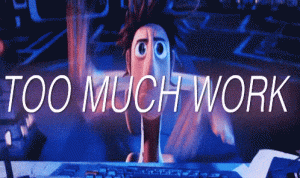LIGHTS ON BUT NOBODY’S HOME
Social media clips have and continue to worry parents worldwide based on the impact this may have on their children’s brains—specifically, the effects on children’s attention span. TikTok, the prime example of short-form video content, had nearly 1.5 billion monthly active users in the third quarter of 2022. The reason behind this trend? This sudden and drastic usage is because users on this platform desire a short and sweet entertainment approach. Studies support the finding that TikTok has and continues to take over consumers’ time through its short-clip process.
the impact this may have on their children’s brains—specifically, the effects on children’s attention span. TikTok, the prime example of short-form video content, had nearly 1.5 billion monthly active users in the third quarter of 2022. The reason behind this trend? This sudden and drastic usage is because users on this platform desire a short and sweet entertainment approach. Studies support the finding that TikTok has and continues to take over consumers’ time through its short-clip process.

Research indicates that the average user in the United States spends roughly 45.8 minutes per day on TikTok, beating other forms of social media videos such as Instagram, Facebook, and Twitter. Globally, the viewing amount is up to nearly 53 minutes per day. Additionally, expanding beyond just TikTok, these short-term, vertical videos constitute a much higher watch rate than horizontal, longer videos.
WRAP YOUR BRAIN AROUND THIS
Given that the brain’s prefrontal cortex – the part that accounts for decision- making and impulse control – does not fully develop until age 25, children worldwide struggle to regulate access to these shorter videos. The issue of shorter videos isn’t just present in the United States; studies in countries like China are also prevalent. China’s Zhejiang University determined that China’s version of TikTok, Douyin, found that parts of the brain responsible for addiction were present in students, and many dealt with difficulty in stopping to watch these clips.
TikTok and other short-term videos on social media appeal directly to this generation’s desire to avoid sustaining attention. In turn, such an influence on children can impact their ability to function in the real world. Dr. Michael Manos of Cleveland Clinic Children’s Center for Attention states, “If kids’ brains become accustomed to constant changes, the brain finds it difficult to adapt to a non-digital activity where things don’t move quite as fast.” Although this is a relatively new scientific study, it has long been that the use of social media negatively impacts academic performance. The impact of social media has created what society recognizes as an attention deficit. The trend of short-term videos on social media and entertainment devices worldwide has and continues to impair society’s cognitive functions.
generation’s desire to avoid sustaining attention. In turn, such an influence on children can impact their ability to function in the real world. Dr. Michael Manos of Cleveland Clinic Children’s Center for Attention states, “If kids’ brains become accustomed to constant changes, the brain finds it difficult to adapt to a non-digital activity where things don’t move quite as fast.” Although this is a relatively new scientific study, it has long been that the use of social media negatively impacts academic performance. The impact of social media has created what society recognizes as an attention deficit. The trend of short-term videos on social media and entertainment devices worldwide has and continues to impair society’s cognitive functions.
QUALITY OVER QUANTITY
Although many factors are in consideration as to why society has progressed into this current state, one in particular that takes the sole blame away from the consumer is that consumer standards are high. Specifically, with the rise of these various new forms of social media, society has prioritized offering content that can appeal to different consumers and preferences. Consumers today have much more options in what they choose to watch.

Accordingly, the consumer may not utilize their attention span for poor entertainment. Instead, viewers have opportunities in a competitive area that pressures society to develop ways to draw this attention and obtain viewership through this source of entertainment. Studies from the Technical University of Denmark determined a substantial decrease in attention space due to the “increasing production and consumption of content.”
TOO LONG IS WRONG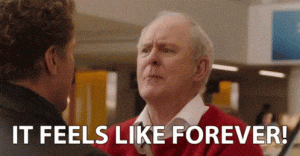
Why society has become fascinated with this new form of entertainment is simple. Short films provide the same level of emotion within a much shorter period. The same sort of behavior is seen even outside of social media. Students who watch recorded lectures tend to adjust the speed to get through the material faster. Movies engineered for viewership in 2 hours stray from the regularity of older films and directors that portrayed their image through 5-hour screen times. Even certain songs created by various artists have seen a rapid drop in the number of lyrics accumulated to ensure that this type of content adjusts to shorter attention spans.
What is the reason behind this new obsession amongst the youth Satisfaction. Studies show that almost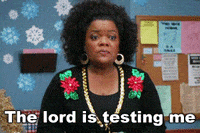 50% of users surveyed by TikTok said that videos lasting merely longer than a minute became “stressful.” Such studies directly correlate to the painful truth that an individual’s attention spans are minimal compared to life before social media and short media clips. Thus, creators of entertainment accommodate this ongoing concern not by attempting to provide a remedy but by adjusting to this current desire for short-film viewership.
50% of users surveyed by TikTok said that videos lasting merely longer than a minute became “stressful.” Such studies directly correlate to the painful truth that an individual’s attention spans are minimal compared to life before social media and short media clips. Thus, creators of entertainment accommodate this ongoing concern not by attempting to provide a remedy but by adjusting to this current desire for short-film viewership.
Through the appeal to this newly recognizable satisfaction, many creators of entertainment have further fueled this addiction rather than creating content to distract from the lure of short-form videos. Is this a wise business decision? Absolutely. The market of addictive children craves this type of entertainment. However, with any addiction, consequences don’t linger too far behind.
ADDICTION TURNS INTO BRAINWASH
The question remains: what does this new obsession have to do with the law? It’s not illegal to provide children with entertainment, regardless of how bad the effect it may have on generations of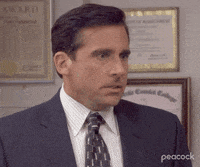 children. The problem is the allegations that apps such as TikTok make no effort to ensure the platform is safe for children and teens. Between the inability to monitor the content and the addictive nature discussed above, the outcome has proved catastrophic for the youth across the globe. Not only is the mental capacity of children in jeopardy, but their physical well-being faces the consequences of association with the addictive nature of short-term videos.
children. The problem is the allegations that apps such as TikTok make no effort to ensure the platform is safe for children and teens. Between the inability to monitor the content and the addictive nature discussed above, the outcome has proved catastrophic for the youth across the globe. Not only is the mental capacity of children in jeopardy, but their physical well-being faces the consequences of association with the addictive nature of short-term videos.

The Social Media Victims Law Group has filed a lawsuit, Case Number 22STCV21355 Smith et al. v. TikTok Inc., on behalf of the parents of two young girls who suddenly died after attempting one of the short clips trending at the time on this platform. Specifically, the dangerous sensation is known as the “blackout challenge.”
The blackout challenge constitutes objects taken and used to strangle oneself to the point of losing consciousness. One of the victims, Lalani Erika Renee Walton, started watching TikTok at age 8. As mentioned above, the addictive nature of these short-clipped videos took control. Not long thereafter, Lalani became addicted to watching the videos and attempting to duplicate them. Due to her latest attempt at reproducing these short-clipped sensations, on July 15, 2021, Lalani died hanging from her bed with a rope around her neck after the disastrous success of this trending challenge.
Similarly, Arriania Jaileen Arroyo, a seven-year-old girl, downloaded TikTok not long after receiving her first phone. Within two years, she, too, became addicted to this frenzy of short-clip social media such as TikTok. Eventually, the new trend of short-clipped videos was this very same blackout challenge. On February 26, 2021, Arriani died hanging from their family’s dog leash fastened to her bedroom door. All because of the opportunity to replicate these videos that jeopardize society’s mental and physical health.
WHY IS THIS TIKTOK’S PROBLEM?
The question then becomes, why is this horrific trend TikTok’s problem? Section 230 of the Communications Decency Act dictates that responsibility does not fall on social media platforms for the content others have posted. Instead, platforms are to moderate as they deem necessary and appropriate. The benefit of 230 created an attempt to provide diversity and opportunity for cultural and intellectual development.
Through the increase of casualties, many argue that such content of dangerous challenges associated with and spread through this program extend beyond the confinement of Section 230’s protections. The “blackout challenge” is only one of many examples that have caused harmful content to be spread and mimicked by others. Others include the Benadryl challenge (hallucinogenic effects) and the salt and ice challenge (chemical burns on one’s skin).
Although Section 230 has and continues to protect individuals and platforms from having to suffer the consequences of others’ conduct, its protection is not obsolete. The act’s protections do not extend to companies that create illegal or harmful content. Although TikTok may not have made the content, this does not end the discussion of its exposure to the consequences of Section 230.
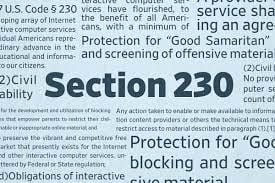
Currently, in these ongoing lawsuits, the actions of the users are not in question, but instead, the one under review is TikTok’s actions. In addition to no protection for creating harmful content, Section 230’s defense is of no avail for failure to warn users. The lawsuit emphasizes TikTok’s omission of warning to parents and users of such foreseeable risks in connection with the product. Specifically, no ordinary and reasonable individual would presume this type of entertaining device, which directs itself to teens and young children, poses these dangers, including the effectiveness of its addictive qualities and ability to lead to a surplus of screen time.
There are also arguments that the design of TikTok’s platform itself is flawed. Such design defects alleged include the creation of an addictive product and failure to verify the ages and identities of minor users. Under the Children’s Online Privacy Protection Act, allowing children under age 13 on a social media platform violates this statute.
To circumvent the legal repercussions of their viewer’s actions, TikTok has attempted to improve its safety and warning features to provide a greater understanding of the content shared on its platform. Specifically, TikTok has altered safety features and even offered ways for parents to monitor it. Under TikTok family pairing, this feature allows parents to dictate how much time children can view the application. It links the parent’s control with their child’s account. Furthermore, a section of TikTok provides a specific area for children 13 and under, which primarily shows child-safe content.
A VIDEO A DAY KEEPS THE HARM IN PLAY:
Everything ties back to TikTok’s appeal that led to this addictive nature in the first place. That is the appeal behind its short-clipped entertainment. Such addiction has impacted children’s cognitive ability and even caused the loss of lives in the process. The extent of this concern stretches far beyond the impact on the ability of children’s brain capacity. Instead, this trend has led to children taking this addictive behavior to a whole new extremity through mimicry. 
Such conduct cannot continue progressing in the direction it has thus far. Such modifications to the platform, although an attempt for betterment, have failed to suffice and prevent this irreparable damage. This area of concern needs to be addressed before society not only loses its ability to think but its ability to act as well. How many lives must be lost before TikTok takes affirmative action?


 The
The 


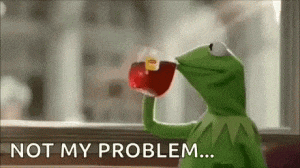


 demand. This conduct is not illegal, but it negates the potential revenue these industries may obtain. Such a solution was, is, and consistently will be recognized as legal activity.
demand. This conduct is not illegal, but it negates the potential revenue these industries may obtain. Such a solution was, is, and consistently will be recognized as legal activity. 